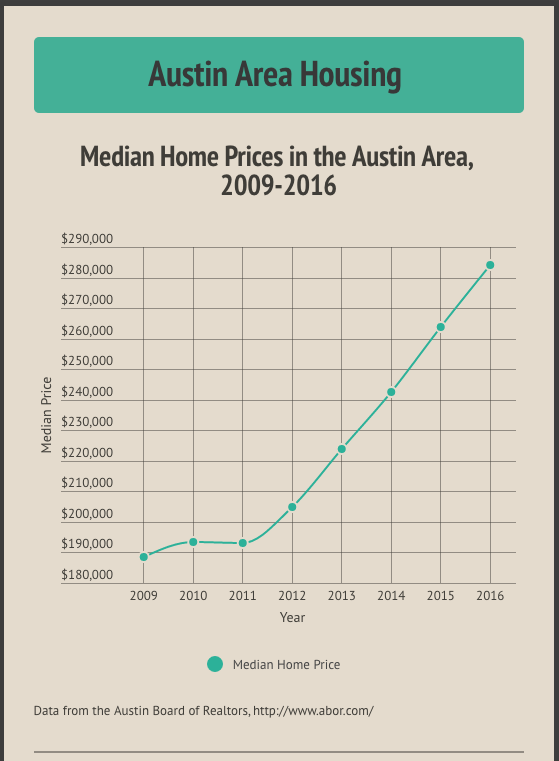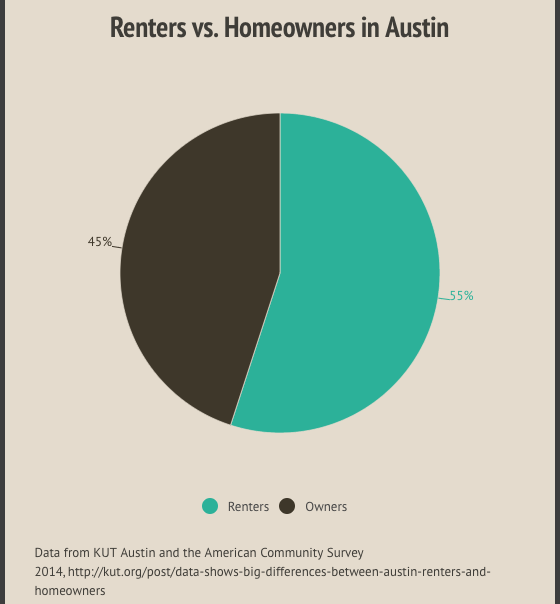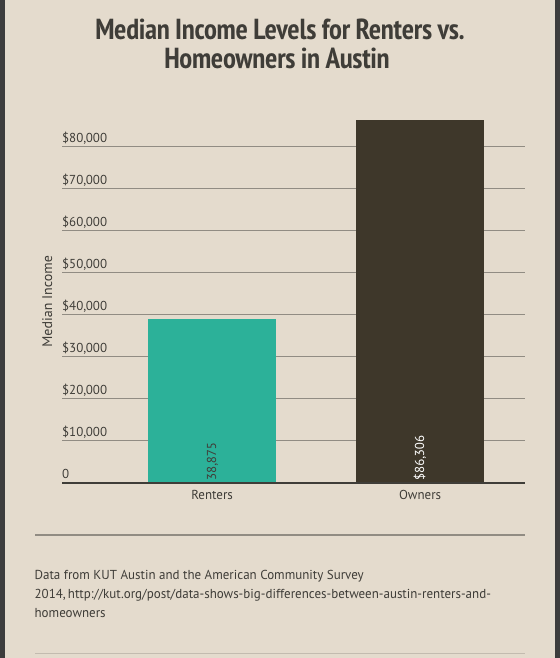Nucleus Learning Network Data Vis Series: Austin housing
Join Sarah Morris, a librarian who co-directs an educational nonprofit called Nucleus Learning Network, as she explores data visualization in a new series.
Many Austinites are talking about, and expressing a range of opinions about, CodeNEXT, the new proposed Land Development Code for Austin. And many more Austinites, regardless of whether they have explored CodeNEXT, are discussing issues the new code hopes to address, including transportation, affordability, development and other concerns that arise when a city is declared a “boomtown.”
CodeNEXT is currently gathering public feedback and will be releasing maps later this spring. While people in Austin wait for more data, and visuals, regarding CodeNEXT, it is perhaps worthwhile to explore data related to one of the major issues that CodeNEXT and the city of Austin hope to tackle: housing affordability.
Below are some charts created using Infogram, an online tool for building charts, reports and infographics. You can view all the graphs online or see them below.
First is a visualization of median home values in Austin from 2009-2016. Housing affordability issues are a common topic for discussion, and complaint, in Austin. But while a great deal has been written about this issue, from speculative pieces about whether Austin is in a housing bubble to complaints about all those Californians moving here, it can be powerful to actually see just how dramatically home prices have increased in Austin over the past eight years. Data for this visualization came from the Austin Board of Realtors.

Next are some visualizations about the number of renters versus the number of homeowners, and their median income levels, in the city of Austin. According to KUT, Austin is somewhat dominated by renters. And the income disparity between homeowners and renters is fairly dramatic and shows no sign of abating.


As discussion and debate surrounding CodeNEXT, and affordability issues in Austin more generally, continues, it can be worthwhile to take a step back and look at some of the trends and data points that are fueling these debates.
The Austin Monitor’s work is made possible by donations from the community. Though our reporting covers donors from time to time, we are careful to keep business and editorial efforts separate while maintaining transparency. A complete list of donors is available here, and our code of ethics is explained here.
You're a community leader
And we’re honored you look to us for serious, in-depth news. You know a strong community needs local and dedicated watchdog reporting. We’re here for you and that won’t change. Now will you take the powerful next step and support our nonprofit news organization?





